In this article, we discuss types of flower tea!
A warm cup of flower tea can be a delightful treat for your senses. From their beautiful appearance to their alluring aroma, these teas have become increasingly popular for their distinctive flavors and wellness properties.
In this article. we dive into the world of flower teas. We will discuss popular (including chamomile, hibiscus, rose, and lavender) and less-known options. In addition, we will touch on blends, brewing techniques, and health benefits.
Please note: This article contains affiliate links, meaning I may earn a commission if you make a purchase by clicking a link. Of course, this comes at no extra cost to you and helps me keep offering readers solid information.
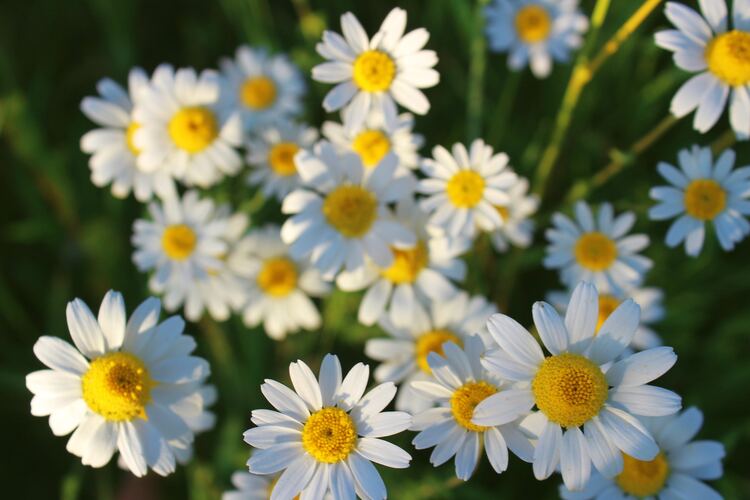
Types of Flower Tea
Flower teas, or floral teas, are beverages made by steeping various dried flowers or flower buds in hot water. Flower teas can be made from a single type of flower or a combination of different flowers and herbs to create unique flavors and scents.
To clarify, these are technically infusions or tisanes. True teas come from the leaves of the Camellia sinensis plant.
However, some include true tea leaves scented, blended, or mixed with flowers in this category.
Common types of flower tea include:
Rose Tea
Rose tea is a fragrant and soothing beverage made from rose petals or rosebuds. It’s popular for its lovely aroma. You will find it light in flavor, with delicate floral notes.
Considered a beauty drink, rose tea is believed to benefit skin and hair health. It also serves as a mild digestive aid and mood booster.
Some blends may include tea leaves from the Camellia sinensis plant or additional herbs like mint or lemon.
Chamomile Tea
Chamomile tea is a popular herbal infusion enjoyed for its calming effects. It’s prepared from dried chamomile flowers and has a sweet taste (often compared to apple flavor). It’s commonly consumed in Europe and North America, particularly before bedtime, to promote relaxation and restful sleep.
Jasmine Tea
Jasmine tea is a scented tea made by infusing green, white, or sometimes black tea leaves with fragrant jasmine flowers. The petals are removed after scenting, but the floral aroma remains. Jasmine tea is loved for its refreshing, delicate flavor. It is a classic choice in China.
An infusion of pure jasmine flowers can be consumed as well.
Hibiscus Tea
Hibiscus tea, also known as “sour tea,” is made from the dried calyces of the hibiscus flower. It yields a vibrant, ruby-red infusion with a tangy, refreshing flavor. Often enjoyed hot or iced, it can be enhanced with sugar or natural sweeteners to balance the tartness.
This is a popular choice in Mexico, Central America, and Jamaica. This tea is packed with antioxidants and vitamin C, making it a refreshing and healthy choice.
Chrysanthemum Tea
Chrysanthemum tea is a traditional Chinese tea made from dried chrysanthemum flowers. It has a light, floral taste with a hint of natural sweetness. Some people enjoy it with a touch of honey or rock sugar.
This floral brew offers cooling and immune-boosting properties, making it an ideal choice for hot days or when combating seasonal allergies.
Lavender Tea
Lavender tea is an aromatic infusion made from dried lavender flowers. It’s known for its calming effects and soft, floral flavor. Like chamomile tea, this herbal beverage is often enjoyed before bedtime to promote relaxation and restful sleep.
Calendula Tea
Calendula tea is a vibrant, golden infusion made from the petals of calendula flowers. It offers a mildly bitter taste, sometimes compared to saffron, and may have a naturally lemony scent.
Note Calendula is a genus (group) of plants. Within that genus, there are several species, including the common marigold (Calendula officinalis). Therefore, some refer to this infusion as marigold tea (since this is the most used species within the genus).
Butterfly Pea Flower Tea
Derived from the petals of the butterfly pea flower, this tea is known for its stunning blue hue that changes to purple when lemon is added. It has a mild, earthy flavor and pairs well with other herbs or true tea leaves. You’ll often see butterfly pea flowers in blooming teas, hand-tied tea balls that unfurl into a beautiful floral display when steeped.
Not only is it eye-catching, but this tea also has potential memory-boosting and anti-inflammatory benefits.
Osmanthus Tea
Osmanthus tea is an intoxicating fragrant infusion made from Osmanthus flowers. This tea is delicate in taste with a hint of natural sweetness. It’s often blended with true tea leaves from the Camellia sinensis plant, enhancing the aroma and flavor. Osmanthus tea is enjoyed hot or cold for a sublime sensory experience.
Lotus Tea
Lotus tea is an elegant infusion made from the dried petals or stamen of the lotus flower. With a gentle, floral flavor and natural sweetness, it has been a cherished beverage in Asian cultures for centuries. Lotus tea is often paired with green, white, or black tea leaves to create subtle blends that balance the aroma and taste of the lotus flower.
Elderflower Tea
Elderflower tea is made from the delicate, cream-colored blossoms of the elder tree, scientifically known as Sambucus nigra. This tea has been cherished for centuries due to its flavor and pleasant aroma.
It is often used to support the immune system and relieve cold symptoms.
Peony Tea
Peony tea, also known as mudan tea, is made from the petals of the peony flower, specifically the white and green tea varieties of the peony plant (Paeonia lactiflora). This tea is less common than other floral teas but offers a delightful flavor profile and potential health benefits (such as promoting good digestion).
Other Types of Flower Tea
Now, you should have a good idea about the most popular types of flower tea. You can read other flower-related articles on the site to enhance your knowledge on the topic. We are leaving you the links below.
Apple Flower Tea, Pomegranate Flower Tea, Blue Mallow Tea, Tienchi Flower Tea, Red Clover, Mullein, Cherry Blossoms
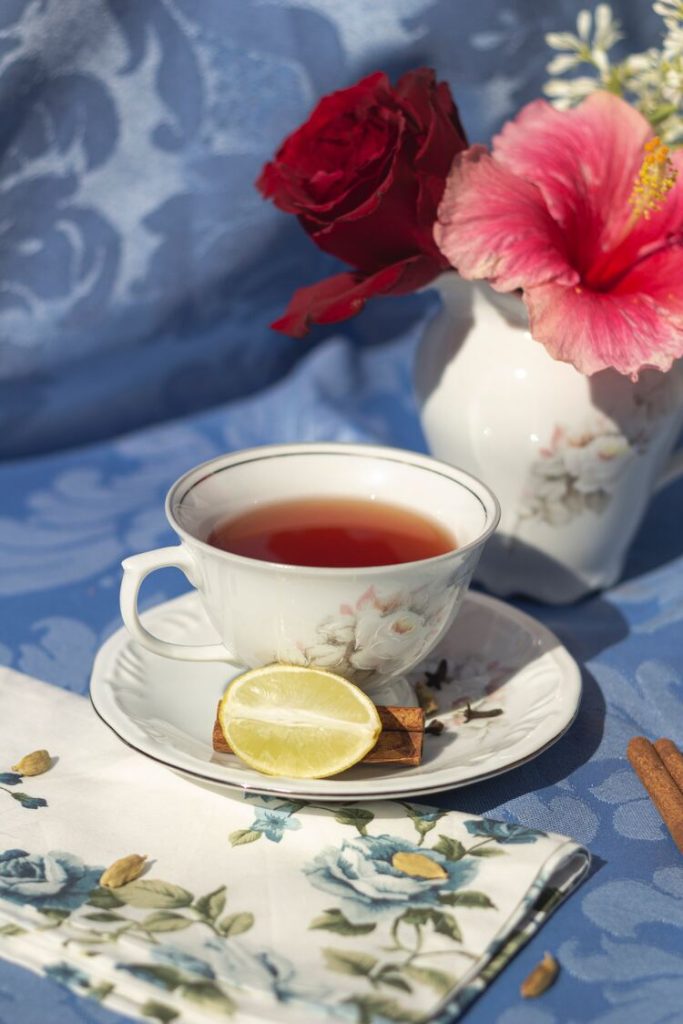
Popular Blends and Mixes
After discussing “pure” flower teas, it is time to explore how to incorporate true tea leaves, fruits, and herbs to enhance your floral infusions.
Incorporating green tea into a blend is an excellent choice due to its light and grassy flavor. A popular example is Jasmine Green Tea, which combines green tea leaves with jasmine blossoms, giving you a fragrant and therapeutic beverage.
Black tea also makes a perfect base for floral infusions. Try blending black tea with rose petals, which add a beautiful aroma and deliver a subtle sweetness to the brew. Another wonderful floral combination is black tea mixed with lavender, creating a slightly sweet and calming beverage.
White tea is known for its delicate and mild flavor, perfect for blending with more prominent, floral flavors. A popular choice is White Tea and Chrysanthemum, where the bright and fragrant chrysanthemum flowers complement the soft taste of the white tea. Adding a touch of peach can also enhance its fruity notes.
For those who enjoy the complex flavors of oolong tea, try blending it with osmanthus flowers. This creates a delightful, fragrant tea with hints of fruity peach and apricot. This blend is perfect for an afternoon pick-me-up or as a delicious evening treat to unwind.
If you’re interested in caffeine-free alternatives, you can leave off tea leaves from your blends. For example, chamomile and lavender work well together, providing a calming and soothing sensation. Hibiscus tea is another favorite, giving off a tangy, cranberry-like flavor that pairs wonderfully with various fruits, such as peach or apple.
Lastly, some floral teas can be enhanced with a touch of milk, particularly strong black or oolong blends. This addition creates a smoother, creamier texture, adding depth and richness to your tea experience.
Remember, when customizing your floral tea blends, the possibilities are endless! Mix and match different true teas (green, black, white, and oolong) with various flowers, fruits, and herbs to find your perfect combination.
Aesthetics and Sensory Experience of Flower Tea
Flavor Profile
Drinking flower tea provides a vast array of delightful flavor profiles.
The table below summarizes how to pick a flower tea based on flavor preferences.
| Flavor Preference | Flower Tea Recommendations |
| Sweet | – Chamomile Tea |
| – Rose Tea | |
| – Lavender Tea | |
| – Jasmine Tea | |
| – Peony Tea | |
| – Elderflower Tea | |
| Fruity | – Hibiscus Tea |
| – Chrysanthemum Tea | |
| – Calendula Tea | |
| Light and Floral | – Jasmine Tea |
| – Marigold Tea | |
| – Elderflower Tea | |
| – Peony Tea | |
| Refreshing Citrusy | – Elderflower Tea |
| – Hibiscus Tea | |
| – Calendula Tea | |
| – Marigold Tea | |
| Soothing and Herbal | – Chamomile Tea |
| – Lavender Tea | |
| – Chrysanthemum Tea | |
| – Calendula Tea |
Please note that these recommendations are general guidelines, and individual preferences can vary.
Appearance and Presentation
The visual appeal of flower tea adds to the sensory experience. With bright colors and beautiful flowers, your tea becomes a feast for the eyes! Each type of flower tea offers a unique appearance – some might bloom into a flora spectacle, while others may float atop your tea as a delicate embellishment.
The presentation of flower tea can also vary, whether it’s served in a clear glass teapot to showcase the blooming beauty or elegantly arranged inside a tea cup with other edible flowers or herbs.
Scent and Aroma
The olfactory experience of flower tea is equally exquisite. The scent of flower teas can range from subtly floral to more intense, like that of jasmine flowers. Many people enjoy the calming, sweet aroma that envelops them from when they open the tin to when they take their first sip.
Preparing Different Types of Flower Tea
Buying
When buying flowers to prepare tea, ensure you get the best quality by choosing a reputable supplier or retailer specializing in herbal and floral teas. Look for companies with a good reputation for sourcing high-quality, organic, and pesticide-free flowers.
Drying and Processing
You can gather and process fresh flowers if you prefer a more hands-on approach.
To dry the flowers, carefully spread the petals or buds on a clean surface and let them dry naturally, away from direct sunlight. Some flowers must be placed on a rack or in a food dehydrator to ensure even drying.
Depending on the specific flower type and moisture content, drying can take several hours to a few days. Once the flowers are dehydrated, store them in a cool, dark place.
Note: Please use this approach if you know what you are doing. If not, we encourage you to buy dry flowers from a reputable vendor.
Infusion Method
When preparing flower tea, boiling water extracts the flavors and nutrients from the petals or buds. Start by choosing a glass teapot that allows you to watch the flowers unfold and lets the beautiful colors and aromas be fully appreciated.
Place your dry flowers into the teapot and pour boiling water over them, ideally using between 1 to 3 teaspoons of flowers per 8 ounces of water.
Allow the infusion to steep for 3 to 5 minutes or according to your preferred taste. Some flowers have strong flavors so a shorter steeping time may be needed, while others may require a longer steeping time for a fuller flavor.
Strain the tea into your cup, and enjoy flower tea’s relaxing and aromatic experience.
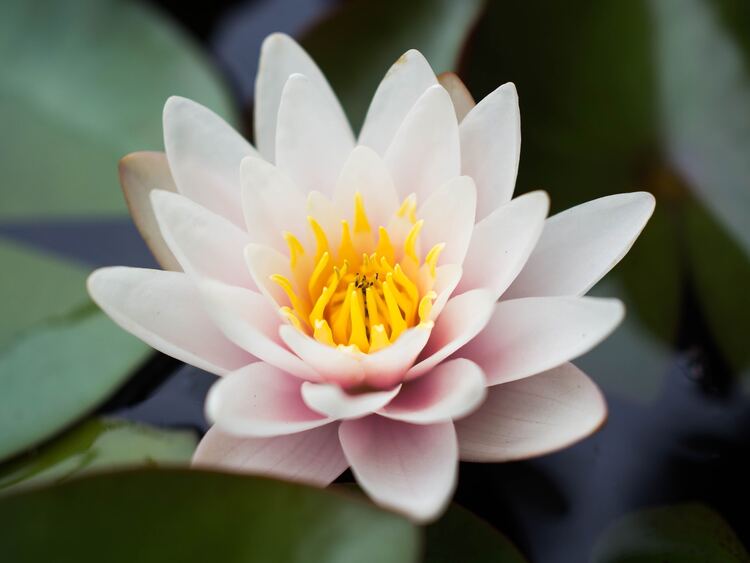
Types of Flower Tea – Health Benefits
Each flower tea has particular health benefits. Below, we provide a general idea of what to expect when consuming these infusions.
Heart Health
Flower tea is known for its positive effects on heart health. Drinking it regularly can help maintain a healthy cardiovascular system, as it is rich in antioxidants. These antioxidants, including catechins, can prevent damage to your heart muscle and blood vessels, reducing the risk of heart disease.
Blood Pressure Regulation
Another great benefit of flower tea is its ability to regulate blood pressure. The antioxidants in flower tea help relax blood vessels, allowing for better blood flow. This can contribute to the prevention of hypertension and other cardiovascular issues.
Oral Health
Your oral health can also benefit from consuming flower tea. The high levels of antioxidants help combat bacteria responsible for gum disease and bad breath. Additionally, flower tea contains a small amount of fluoride, which can strengthen your teeth and prevent cavities.
Cancer Prevention
The rich antioxidant content in flower tea may also contribute to cancer prevention. Antioxidants protect your body’s cells from free radical damage, reducing the risk of developing various types of cancer. While more research is needed to confirm the direct impact of flower tea on cancer prevention, incorporating it into your diet may be a good step toward overall health.
Digestive Issues Aid
Flower tea can relieve digestive issues like indigestion and bloating. The soothing properties found in the tea can help relax your gastrointestinal tract, aiding in the digestion process and reducing discomfort associated with digestive problems.
Sleep and Relaxation Benefits
Finally, an essential benefit of flower tea is its ability to promote relaxation and help combat insomnia. The calming properties of the tea can help ease your mind and promote a good night’s sleep. Regularly consuming flower tea may lead to better sleep quality and reduced restlessness at night. So, enjoy sipping flower tea before bedtime for a soothing and restful experience.
Frequently Asked Considerations
Caffeine Content
Regarding flower teas, caffeine content is often a concern for many people. Pure flower teas are caffeine-free. However, some flower tea blends may include ingredients with caffeine, such as tea leaves or yerba mate. Our recommendation is to read the ingredient list of a product before purchasing.
Safety and Consumption Guidelines
When enjoying flower teas, awareness of safety and consumption guidelines is essential. While these teas can provide potential health benefits, you should be cautious about the source and infusion process to avoid any potential toxins.
- Toxins: Ensure flowers come from a reputable source, as some plants might contain pesticides or other harmful substances. It’s crucial to ensure that your flowers are specifically intended for consumption and are not treated with chemicals.
- Essential Oils: Some flower tea blends have added essential oils to enhance the flavor and aroma. These oils are generally safe for consumption but must be used in moderation and always follow the recommended dosage guidelines.
- Varieties: With countless varieties of flower teas available, following specific brewing instructions for each type is essential. Different flowers may require different temperatures, steeping times, and preparation methods for the best flavor and potency.
You can confidently enjoy flower teas’ diverse flavors and health benefits by staying informed about caffeine content and safety guidelines.
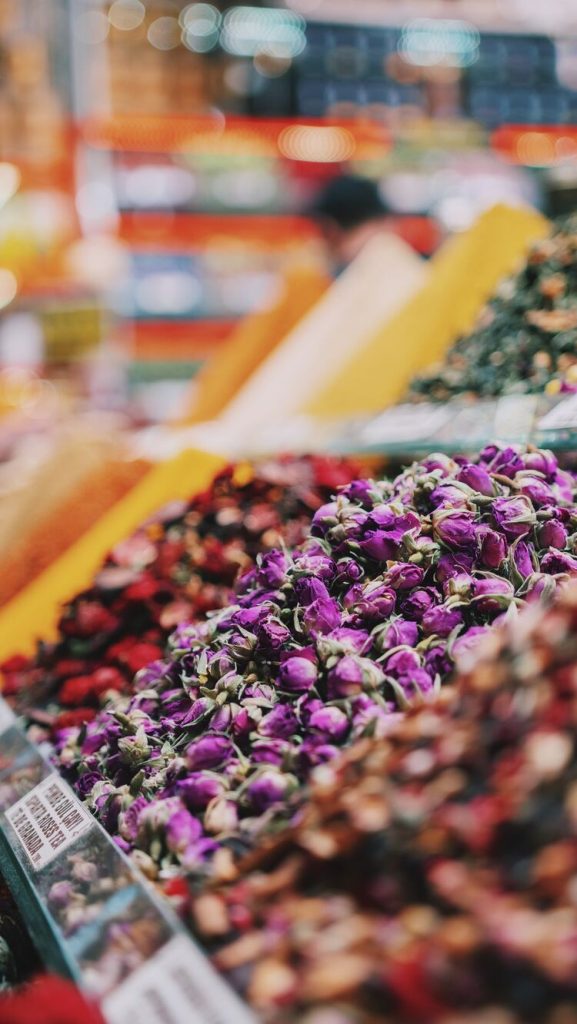
Buying Recommendations
If you are interested in buying flowers to prepare tea, please consider these recommendations:
CERTIFIED Organic (USDA seal) Chamomile Flowers Herbal Tea

Organic Lavender Flowers Dried

Organic Rose Flower Rose Petals Tea


ELITEA 4oz Dried Osmanthus Flower Herb Loose Leaf Tea

Frequently Asked Questions
What are the health benefits of various flower teas?
Many health benefits of drinking flower teas include improved digestion, stress relief, better sleep, and skin health. Each flower tea has particular benefits: for example, chamomile is known for its calming effects, while hibiscus may help lower blood pressure. Always consult a medical professional before using flower teas for medicinal purposes, as individual results may vary.
How do you prepare dried flowers for making tea?
First, measure the desired amount into a tea infuser, teapot, or teabag to prepare dried flowers for making tea. Generally, use one teaspoon of dried flowers per cup of hot water. Then, heat the water to a temperature suitable for the particular flower tea, typically between 180°F-212°F (82°C-100°C). Pour the hot water over the dried flowers and steep for the recommended time (usually 3-7 minutes) before removing the flowers or infuser.
What are some popular floral tea blends?
Some popular floral tea blends include jasmine green tea, rose black tea, and lavender earl grey. These blends combine the flavors and health benefits of floral notes and traditional tea leaves to create a distinct and enjoyable taste. Many other blends are available, pairing various flowers with green, black, or herbal teas, so feel free to explore and find your favorites.
How can I make tea from fresh flowers?
First, ensure the flowers are free from pesticides and suitable for consumption. Gently rinse the flowers under cold water to remove dirt or residue, then pick off the petals if necessary. Use about 1/4 cup of fresh flower petals per cup of boiling water. Steep the petals for 5-10 minutes, strain, and enjoy. Keep in mind that steeping time and water temperature may vary depending on the specific flowers used.
Which flower teas aid in weight loss?
Some flower teas, such as hibiscus, rose, and lotus, are believed to have weight loss benefits as they may help increase metabolism, reduce inflammation, and support digestion. However, relying solely on flower teas for weight loss is unrealistic, and a well-balanced diet and regular exercise remain essential for successful long-term results.
What are some common flowers used in Chinese teas?
Chinese flower teas often use ingredients such as chrysanthemum, rose, jasmine, osmanthus, and peony. These flowers provide pleasant flavors and aromas and have been used in Traditional Chinese Medicine for centuries to promote various health benefits.
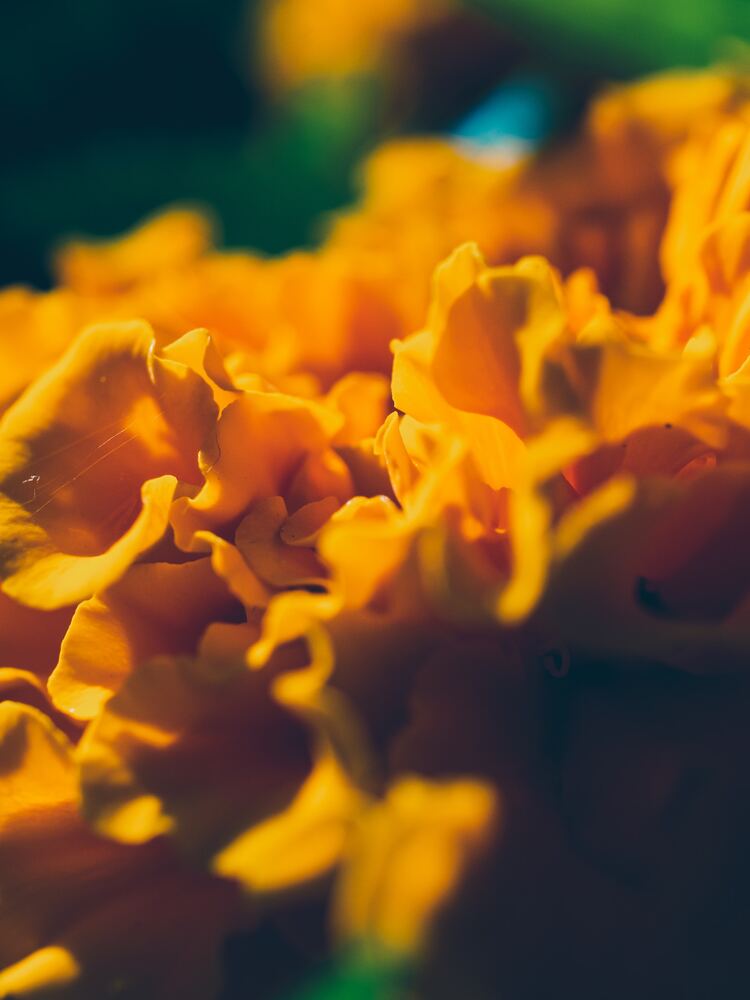
I hope you have enjoyed the article and learned something new.
Tell me, what are your favorite types of flower tea?
More About Flower Teas
What Does Jasmine Tea Taste Like?
What Does Hibiscus Tea Taste Like?
What Does Rose Tea Taste Like?
What Does Rose Milk Tea Taste Like?
What Does Lavender Tea Taste Like?